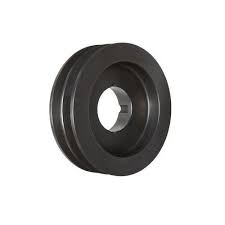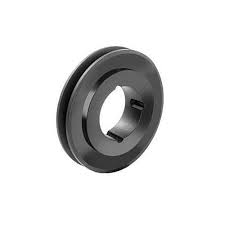Product Description
Quick Details
| Applicable Industries:
Building Material Shops, Manufacturing Plant, Machinery Repair Shops, Food & Beverage Factory, Construction works , Energy & Mining, Other |
Customized support:
OEM, ODM |
| Part name :SPA CHINAMFG cast iron pilot bore 3 grooves timing belt pulley | Surface treatment: Blackened/blue |
| Material: C45 | Brand Name:REACHJY |
| Application:power transmission | Inspection: 100% |
| Certification:ISO | Place of Origin:ZheJiang , China |
| Certification: | ISO |
|---|---|
| Pulley Sizes: | SPA Spb |
| Manufacturing Process: | Cast Iron |
| Material: | Steel |
| Surface Treatment: | Blackened/Blue |
| Application: | Chemical Industry, Grain Transport, Mining Transport, Power Plant |
| Samples: |
US$ 50/Piece
1 Piece(Min.Order) | |
|---|
| Customization: |
Available
| Customized Request |
|---|

What safety considerations should be kept in mind when dealing with spa pulleys?
When dealing with spa pulleys, several safety considerations should be kept in mind to prevent accidents and ensure the well-being of individuals involved. Here’s a detailed explanation of the safety considerations:
1. Power Disconnection:
Before working on or near spa pulleys, ensure that the power to the spa equipment is completely disconnected. This prevents accidental starting of the motor or any unexpected movement of the pulleys. Turn off the power supply at the circuit breaker or switch and verify that there is no electrical power flowing to the spa system.
2. Lockout/Tagout Procedures:
When performing maintenance or repair tasks on the spa pulleys, follow proper lockout/tagout procedures. Lockout/tagout involves securing the power source with a lock or tag, preventing unauthorized re-energization of the equipment while work is being carried out. This helps to protect individuals from accidental activation of the spa system and ensures their safety during maintenance activities.
3. Personal Protective Equipment (PPE):
Wear appropriate personal protective equipment (PPE) when dealing with spa pulleys. This may include safety glasses or goggles to protect the eyes from debris or flying particles, gloves to provide hand protection, and any other necessary protective gear based on the specific task and potential hazards involved. PPE helps minimize the risk of injuries and enhances personal safety.
4. Proper Training and Knowledge:
Ensure that individuals working with spa pulleys have received proper training and possess the necessary knowledge and skills to perform the tasks safely. They should be familiar with the spa equipment, understand the potential hazards associated with pulley operations, and know the correct procedures for installation, maintenance, and repair. Proper training helps minimize the risk of accidents and ensures that work is carried out in a safe and competent manner.
5. Equipment Inspection:
Prior to any work involving spa pulleys, inspect the equipment for any signs of wear, damage, or malfunction. Ensure that the pulleys are in good condition, free from cracks, excessive wear, or any other issues that may compromise their integrity or performance. Address any identified problems before proceeding with the task to avoid potential accidents or failure during operation.
6. Proper Installation and Alignment:
During installation or replacement of spa pulleys, ensure that they are properly installed and aligned. Follow the manufacturer’s instructions and specifications for proper pulley installation, including the correct alignment, tensioning, and fastening procedures. Improper installation or misalignment can lead to premature wear, reduced performance, or unexpected pulley failures, which can pose safety hazards.
7. Regular Maintenance:
Incorporate regular maintenance of spa pulleys into the overall spa maintenance routine. This includes tasks such as cleaning, lubricating, and inspecting the pulleys for wear or damage. Regular maintenance helps identify and address any potential safety concerns, ensuring that the pulleys continue to function properly and safely.
8. Professional Assistance:
If you are unsure about any aspect of dealing with spa pulleys or if the task requires specialized knowledge or expertise, seek professional assistance. A spa technician or a qualified professional can provide guidance, perform the necessary maintenance or repair tasks, and ensure that safety protocols are followed.
In summary, when dealing with spa pulleys, it is important to prioritize safety. This includes disconnecting power, following lockout/tagout procedures, wearing appropriate PPE, receiving proper training, inspecting equipment, ensuring proper installation and alignment, conducting regular maintenance, and seeking professional assistance when needed. By adhering to these safety considerations, the risk of accidents or injuries associated with spa pulleys can be minimized, promoting a safe working environment for all individuals involved.

How are spa pulleys customized for specific spa makes and models?
Customizing spa pulleys for specific spa makes and models involves several considerations. Here’s a detailed explanation of the process:
1. Understanding Spa Requirements:
To customize spa pulleys, it is crucial to have a comprehensive understanding of the specific spa make and model. This includes knowledge of the motor specifications, pump requirements, and other driven components within the system. Understanding the power, speed, and torque requirements of the spa system helps in selecting or designing pulleys that will meet the precise needs of the spa.
2. Identifying Pulley Size and Ratio:
The size and ratio of the pulleys are key factors in customizing spa pulleys. By considering the motor speed and the desired speed of the driven component, the appropriate pulley sizes and ratios can be determined. Pulley size affects the rotational speed and torque output, while the ratio determines the speed relationship between the motor and the driven component. Careful calculations and analysis are performed to ensure the pulley dimensions and ratios align with the requirements of the specific spa make and model.
3. Pulley Material and Construction:
The choice of pulley material and construction is another aspect of customization. Different spa makes and models may have varying environmental conditions or operating parameters that require specific pulley materials. Factors such as temperature, moisture, and chemical exposure are considered when selecting materials that can withstand the spa environment. Additionally, the pulley’s construction, including its reinforcement and balancing features, may be tailored to enhance durability and performance based on the specific spa requirements.
4. Belt or Cable Compatibility:
Customizing spa pulleys also involves ensuring compatibility with the belts or cables used in the spa system. Pulleys must be designed to accommodate the specific belt or cable type, width, and thickness that are recommended by the spa manufacturer. The pulley’s design, such as groove shape, notch pattern, or tooth profile, should match the belt or cable to ensure proper engagement and grip. This compatibility ensures reliable power transmission and prevents slippage or premature wear.
5. Collaborative Design and Manufacturing:
In some cases, spa pulleys may be custom-designed and manufactured in collaboration with the spa manufacturer or a specialized pulley manufacturer. This collaborative approach allows for the development of pulleys that precisely meet the requirements of the specific spa make and model. The manufacturer’s expertise in pulley design, materials, and manufacturing processes ensures the production of high-quality pulleys tailored to the unique needs of the spa.
6. Quality Assurance and Testing:
Before integrating customized pulleys into the spa system, rigorous quality assurance and testing procedures are typically conducted. This ensures that the pulleys meet the required performance standards and operate safely within the spa environment. Testing may involve assessing factors such as power transmission efficiency, belt or cable engagement, and overall system functionality. Through these tests, any potential issues or improvements can be identified and addressed before finalizing the customized pulleys for the specific spa make and model.
By following these steps, spa pulleys can be customized to fit the specific requirements of different spa makes and models. This customization process ensures optimal performance, reliability, and compatibility, providing spa owners with pulleys that are specifically designed for their spa’s unique needs.

What types of belts or cables are typically employed with spa pulleys?
When it comes to spa pulleys, different types of belts or cables can be employed depending on the specific application and design of the system. Here’s a detailed explanation of the typical types of belts or cables that are commonly used with spa pulleys:
1. V-Belts:
V-belts are one of the most commonly employed types of belts with spa pulleys. They have a trapezoidal cross-section and are designed to fit into the grooves or notches present on the surface of the pulley. V-belts offer excellent grip and traction, allowing for efficient power transfer between the pulley and the driven component, such as the pump impeller or blower fan. They are flexible, durable, and suitable for moderate to high power transmission applications.
2. Timing Belts:
Timing belts, also known as synchronous belts, are toothed belts that feature teeth on the inner surface. These teeth fit into the corresponding grooves or teeth on the pulley’s surface, ensuring precise and synchronous power transmission. Timing belts are commonly used in applications that require accurate timing and positioning, such as controlling the rotation of the pump impeller or other components. They are known for their low noise, high efficiency, and resistance to slipping.
3. Flat Belts:
Flat belts, as the name suggests, have a flat surface and are typically made of materials like rubber or synthetic materials. Although less common in modern spa and hot tub systems, they may still be employed in certain applications. Flat belts are flexible, easy to install, and suitable for low power transmission requirements. However, they may have limitations in terms of grip and power transfer efficiency compared to V-belts or timing belts.
4. Cables:
In some spa and hot tub systems, particularly those with pulley-driven mechanical control systems, cables may be employed instead of belts. These cables are typically made of steel or other strong materials and are used to transmit linear motion or tension between the pulley and the component being controlled. For example, cables may be used to control the opening and closing of valves or the adjustment of water flow. The use of cables provides flexibility and precise control over the movement of components.
It’s important to note that the specific type of belt or cable employed with spa pulleys may depend on factors such as the manufacturer’s specifications, system design, load requirements, and intended application. Consulting the system’s documentation or contacting the manufacturer will provide accurate information on the recommended type of belt or cable to be used with a particular spa pulley.


editor by CX
2023-10-04
